What are EMU Trainsets?
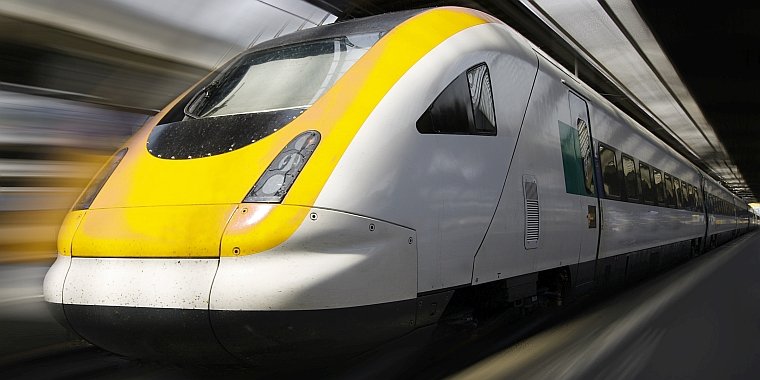
IN his maiden railway budget on Feb 26 2015, the Railway Minister Sri Suresh Prabhu announced the following:
“With a view to providing superior riding experience and about 20% savings in journey time, it is proposed to introduce a very modern train system called train sets. These are similar to bullet trains in design and can run on existing tracks without an engine to haul them.”
The announcement says that “Indian Railways will procure 15 state-of-the-art Electrical Multiple Unit (EMU) train sets from European or Japanese vendors to run Rajdhani and Shatabdi services. This proposal has been around for quite some time, first proposed in a report (page 19) of a “Expert Group for Modernization of Indian Railways” under Sam Pitroda. But it is only now that an announcement has formally come from the very top itself and grabbed headlines the way it has. Ever since, both the railfan-verse and the other world of train-muggles have been abuzz with this news. However, this time both the worlds seem be equally flummoxed at this announcement. What are these trainsets? EMUs to run Rajdhanis? What?? How can an EMU be used to run a Rajdhani?
What Exactly is an EMU Trainset?
Ever since the budget I was asked several time what these infernal things are. People seem to be confused, and rightly so. Let us see what (EMU) Trainsets are, how they work and what they are used for. To start off, know all those “shining”, streamlined, futuristic looking trains with both pointed and aerodynamic with driving cabs we see in developed countries? Yeah, all those are EMU Trainsets. Very simply put, Trainsets are those train designs used to run Bullet Trains and also local and Metro trains (including Indian ones). EMU type of trainsets will not need locomotives (engines), can run on their own, will have two “driving cabs” at either end and will look very “modern and upmarket”, like new-age buses, the Volvos and Scanias. Their design and specs will change according to what service the train is used for, which range from Bullet Trains to local trains and Metros. Did you ever look at a Bangalore Metro train and think, “Damn, if only all trains in India were like this!” Well, your prayers are about to be answered 🙂 Looks-wise, atleast.
Though the terms EMU and Trainsets are used together and interchangably, they are two different things and we will look at them separately. The best way to explain what a Trainset is is to compare it with a conventional train we commonly see in India. Indian trains consist of a number of individual coaches joined or coupled together and headed by am individual locomotive at the front. These coaches are joined together by a “Buffer and Chain” coupling (also known as screw coupling or English coupling) consisting of a screw and a hook to form any train. The advantage of this method is that coaches can be easily separated using just muscle power and a hammer. This method of coupling is also the oldest in the books and is probably the most ancient technology still widely in use on Indian Railways today. The coaches are standalone units and the joints where coaches are coupled are weakest links of the train. Goes without saying that coaches like these affect stability and top speed of the train.
You must have seen how locomotives are coupled to the train by a guy down on the track (watch below). The buffers or the cylindrical extensions on either side of the coach and locomotives are to prevent the coaches from jumping onto each other (and are not magnetic, as it is widely believed) like shock absorbers.
A trainset (or train set) as its name suggests, is a train that comes from the manufacturer as a complete set or seamless single unit which even has model names, numbers and variants like cars. Trainsets consist of a number of coaches semi-permanently attached to each other and cannot be separated easily like our “conventional” trains, hence operated as a single unit. They can be driven from both ends and don’t (usually) need a locomotive. Instead of simple hooks and screws, coaches are coupled together using more advanced technology like Schafenberg Couplers and also have much more complicated interconnections between them like high-voltage connections and control and convenience lines for running the train. Some trainsets, especially most European ones are articulated, where a single bogie (called Jakobs bogie) is shared between coaches (Read more about trainset technology here, from the parlance of High Speed Trains). Lighting, AC, PA systems, door control etc are be centrally controlled in trainsets. Since all coaches are one unit, they all will have the same facilities and will age equally. Separating one coach can render the train inoperable because every coach plays a role in running the train, unlike our trains. Picture a long, very very long Volvo bus which can bend at places but the parts between these “bends” cannot be separated into units and has outwards-looking driving cabs at both ends. The most defining thing about trainsets is their sleek looks, all straight lines, smooth, rounded edges, aluminum alloys, glass and plastic. Exteriors of advanced trainsets will not look much different from those of sportscars and airplanes. This is the typical (EMU) Trainset.
And here are some real international trainsets.
Check at the end of this post for details on train types, operators and photographers.
Yes, all our Metro trains are trainsets, as are almost all trains run in the West, from commuter trains to InterCity to Bullet Trains. Trains with individual coaches are becoming obsolete around the world and it is high time we phased them out too. Anyway, this defines a trainset, now, what are EMUs? And what is the conjuncture of both of these terminologies being used together? And how can a trainset run without a locomotive? While a “Trainset” refers to mostly the “structural design” in building the train, “EMU” is more about the “technological design” used in driving the train.
What a EMU (Electric Multiple Unit)?
When someone says EMU, the image that comes into mind of people from India is this:
Everyone knows local trains of Mumbai and other cities are EMUs. People think wonder how “those” EMUs can be used to run Rajdhanis and Shatabdis. However, it is not those EMUs that will be used but trains (trainsets) using the same technology. “EMU” is short for Electric Multiple Unit, and is, not like many people believe, the name of a train or service but of the technological method used in running the train. EMUs are used to run everything from 360 kph High Speed “Bullet” Trains to 25 kph local commuter trains, including our locals. It is only the shape that changes. For instance, all these trains shown below are also EMUs 🙂 (and trainsets)
All trains shown above are High Speed “Bullet” Trains. Let us go back to our Indian trains again. All coaches of our trains are unpowered, meaning they are just “dead” vehicles or trailers which can run only when they are pushed or pulled along by external forces (provided by a locomotive). This of course, is the system that we all know and has been in use since the dawn of railways. But in most parts of the world, especially in the “developed” parts. This shockingly is not the commonest method for running passenger trains today, but the EMU system. Technically, EMU or Electrical Multiple Units are trains consisting of a number of (multiple) units (coaches) that can run by “themselves” (self-propelled) without the help of a locomotive. This is achieved by attaching traction motors (which turn the wheels of locomotives) directly to the wheels of coaches (units). Electrical equipment, pantographs etc are distributed throughout the coaches. The power that would be the locomotive is distributed throughout the train ( (distributed power). In effect each coach turns into a mini-partial-locomotive.
Every coach (unit) in an EMU will have a function to play in powering the train. Power Cars “power” the train by drawing power from OHEs and will have all the transformers, rectifiers and ancilliary equipment used to regulate current etc located in them, Motor Cars will have traction motors attached to their wheels, the train is controlled from the Driving Cars on either ends and coaches with none of these are Trailers. The number of coaches where all this equipment is located differs according to the type of service the EMU is expected to run, ranging from all wheels powered (all Driving Cars) for many High Speed Trains (Bullet Trains) to alternate coaches as Motor Cars (most commuter/InterCity EMUs) to only wheels of coaches at either ends being powered (Mumbai EMUs, TGVs).
Combining a trainset and EMU gives us an EMU Trainset, a set of coaches semi-permanently coupled that can run on its own without a locomotive. All EMUs are essentially trainsets, though all trainsets are not EMUs. The Swiss IC 2000 double decker trainset for example, has a driving cab only at one end, the other end being plain, and none of its coach wheels are powered. It is either pulled or pushed by a Re460 locomotive attached to the “plain” end. In some EMUs like Shinkansen, Siemens Velaro (DB ICE) and Bombardier’s ETRs, driving and electrical equipment is distributed continously throughout the train and for the train to run all this equipment will have to be used simultaneously, done by running high-voltage electrical connections running throughout the train, which is why coaches of a trainset cannot be easily disconnected and trainsets are the best choices to run these trains. In some like TGVs, Thalys, Eurostar etc (manufactured by Alstom) all the driving equipment are placed in power cars or power heads at either end of the train. You can read more about this in our article on High Speed Trains.
The Indian EMU Trainset
As you must have deduced by now, Mumbai Local EMUs will not be used to run these Rajdhanis, of course. These “Trainset Rajdhanis” will be completely new trains like those described above or shown in all the pictures, which have to be freshly acquired, designed and manufactured from scratch. However thankfully, Trainsets of any kind can be bought off the shelf or manufactured on order from companies like Alstom, Siemens, Bombardier, Kawasaki, Hitachi etc among others. What Indian Railways will be doing is inviting tenders to build 16 coach EMU trainsets to run on our existing 1676 mm Broad Gauge tracks for specific technical specs with traction motors, bogies, coaches, and other equipment engineered to be tough and suitable “for Indian conditions”. Once the outer shell is constructed, interiors can be furbished in any way required, as Sitting, Sleeper or Cabin accommodation, just like we do with our present coaches. Of course, trainsets will be fully airconditioned and will have automatically controlled doors which open only while in station (like Metro trains). Please note that our EMU Trainsets will only look like Bullet Trains but will run only as fast as 160 kph, maybe 200 kph on our existing tracks. While Bullet Trains cannot run on our rail tracks because they are not strong enough, these EMU trainsets can because we are only changing the “body” of our trains. But why should be run EMU trainsets if speed cannot be increased drastically?
Indian Railways is overdue on switching from conventional coached train to EMU model. The advantages of EMU trainset type trains are that they are (a lot more) faster, more powerful, have faster acceleration and breaking, better aerodynamics, stability, and safety, faster turnaround times, centralized in-train services, far better overall efficiency and yeah, they look a lot better too. Trainsets running at top speeds of 160kph with their faster acceleration and deceleration can save around 4-6 hours on the Mumbai-Delhi Rajdhani, making the journey a 10-12 hours overnight one. Trainsets are better for passengers in every way, but unfortunately not so for the railway employee, especially the complacent, lazy ones who have been entrenched in the present system. Trainsets will cause a paradigm shift in the way the railways operate, since most rules, especially related to coaching have to be rewritten to accommodate trainsets. Currently, there are no permanent “trains” in the sense of it as any coach can be swapped for use on any train. For example a coach part of the mighty Karnataka Express today could be running as part of the Yeshwantpur-Chikkamagalur passenger tomorrow. This kind of low-maintenance, high flexibility options seen in train operations today will be lost (though replacing everyday trains with trainsets is not in the plan right now). Here are some more EMU Trainsets from across the world 🙂
However, the biggest change trainsets will bring is in the face of Indian trains in general. Barring some AC LHB coaches, Indian trains have been stuck in the stone age in terms of design and aesthetics for a long time. Our coach designs, both interior and exterior are from the 1960s and have not changed since then. Trainsets will change all that, and Indian trains will also start looking and feeling like modern trains anywhere else in the world, all shining glass, aluminium and plastic with fine outside finish and bright, contemporary interiors. Trainsets to our present trains will be the Volvos to the Tata SRTC buses, the glass-and concrete corporate office to the dusty and dingy government office, the Mercedes to the Premier Padmini.
Trainsets will of course have to be bought from an overseas supplier and imported to India. Since India is a unique rail market with unique needs including technology, we need unique equipment too. Since EMU trainsets will only “look” like High Speed trains but are to run on our own tracks, we can save a lot on the technology as we just need to order the “train body”. I would like Alstom to win the contract for building the rolling stock since they already provide coaches for various metro systems in India and are adept at developing trainsets of all kinds from local, metro, commuter, Intercity and express to high speed which include sleepers. Drivetrains could be made by the Japanese (Mitsubishi, Kawasaki, Hitachi) since they are good at developing systems for high-density rail transport. I would like to see the end product looking something like the Alstom Britsh Class 390 Pendolino operated by Virgin in the UK (very first picture above) with windows as big as the ones of our LHB coaches.
A bit about the technicalities. Indian Railways’ trainsets could be a set of semi-permanently coupled 1676 mm Broad Gauge fully air-conditioned single deck non-articulated, two-bogie per aluminium coaches with optional tilting technology configured for seating/sleeping whose capacities being the same as present LHB coaches. Co-Co wheel arrangement (WA) for motor cars and 2’2′ for trailers, since Co-Co is the proven best performing WA for very diverse and rugged Broad Gauge Indian conditions. Bo-Bo wheel arrangement (WAP5) might be suitable for speeds but are good at running only on some few straight flat stretches in the country. For the Rajdhani trainsets the composition could be Co-Co+Co-Co+18 x 2’2’+Co-Co+Co+Co (22 coaches), four power+motor cars including two driving cars and 18 trailer coaches. All the 22 coaches will have passenger accommodation. For Shatabdi trainsets: Two configurations of one being Co-Co+8 x 2’2’+Co-Co (10 coaches): two power+motor+driving cars, eight trailer coaches. Two of these trainsets can be coupled together on busy routes like the Bhopal, Lucknow, Kalka and Amritsar Shatabdis. However, since Indian needs are different we should be provided with options for easier separation of coaches so that we can easily alter configurations as per need.
Yes, it would be better if we designed and built these trains here in India itself. But unfortunately I feel we do not have enough time. This should’ve happened at the latest 10 years back and we have a lot of catching up to do. If it is any consolation, something that Indian Railways is extremely good at is buying technology from abroad and adapting it to best suit Indian conditions using technology transfer. All our locomotives from the WDM2 to WAP7 are testimonials to this. For instance, all our ALCo locomotives are actually WDM2s, its technology reworked to create WDM3As and so on, all done indigenously in India by CLW and RDSO! Hence, these trainsets will come with technology transfer so we can “Make in India” and put trainsets to use for running Durontos and Garibraths as well and later extended to running premier express trains also.
The aversion most people have towards public transportation in India is no doubt because the outdated equipment used by most transport undertakings, especially Indian Railways. Which is why along with making mandatory policy of using rear-engined buses for road transport along with spinning off local/city/mofussil, Intercity and long-distance operations under separated policy and business units, I would also like to see a platform like Alstom’s Coradia or Bombardier’s Talent or Stadler’s FLIRT to run all our passenger trains as MEMUs or DEMUs along with “modern” trainsets for InterCity (Swiss RABDe500) services. Long-distance can still be coached stock but with improved and modern designs like Germany’s City Nightline. Let us hope that this new step in at least improving designs of some of our trains will be the first step in modernizing Indian Railways.
UPDATE: Indian Railways has invited international tenders for 12 trainsets, 2 of which will be imported and the rest to be made in India! We are truly and well, underway!
Photo Explanantions and Credits
All photos are linked from Flickr and are property of their respective owners as mentioned. First line: Train Model Name, Second Line: Train Operator, Third Line: Photo Owner.
[one_fifth]Alstom British Class 390
Virgin Pendolino
Steven Baker
[/one_fifth]
[one_fifth]Shinkansen 500 Series
JR West
etTomio[/one_fifth]
[one_fifth_last]Bombardier Electrostar 377
Southern Trains
5DII[/one_fifth_last]
[one_fifth]Bombardier Talent 2
Deutsche Bahn Regio
Pierreee
[/one_fifth]
[one_fifth]Bombardier ETR 610
SBB / Trenitalia
Peters452002[/one_fifth]
[one_fifth_last]Stadler KISS
EVU Westbahn
K O[/one_fifth_last]
[one_fifth]JR Series E653 K307
JR East Fresh Hitachi
Martin Tack
[/one_fifth]
[one_fifth]PESA 600-001 RegioShark
Oberpfalzbahn
Michael Goll[/one_fifth]
[one_fifth_last]Talgo Alvia S120
RENFE
Jose Ignacio Esnarriaga[/one_fifth_last]
[one_fifth]Alstom Coradia Continental
Deutsche Bahn Regio
Curimedia
[/one_fifth]
[one_fifth]Bombardier MOVIA
Delhi Metro Rail Corp
Akshay Gupta[/one_fifth]
[one_fifth_last]ICF EMU D
Indian Railways
Vadakkus[/one_fifth_last]
[one_fifth]Siemens Velaro
Deutsche Bahn ICE 3
Sergio Moreno Pillo
[/one_fifth]
[one_fifth]E6 Series Shinkansen
JR East
Guotaiban[/one_fifth]
[one_fifth_last]Alstom TGV Series 24000
SNCF TGV Atlantique
Quentin Douchet[/one_fifth_last]
[one_fifth]Alstom Thalys PBKA 43000
Thalys PBKA
Catherine Ma
[/one_fifth]
[one_fifth]CRH 380AL
Chinese Railway CRH
10 10[/one_fifth]
[one_fifth_last]THSR 700T
Taiwan High Speed Rail
Samson Ng . D201[/one_fifth_last]
[one_fifth]Stadler FLIRT 2
TILO / SBB-CFF-FFS
Giovanni Grasso
[/one_fifth]
[one_fifth]Stadler FLIRT RhB ABe4
Rhaetian Railway
Maurizio Messo
[/one_fifth]
[one_fifth_last]Re460 with IC2000
SBB-CFF-FFS
R.Walther[/one_fifth_last]
[one_fifth]JR East Niitsu-Kawasaki E233
JR East E233-1000 Series
Slegzeon1033[/one_fifth]
[one_fifth]Alstom TGV POS
SNCF TGV Duplex
Juanjo Rodriguez[/one_fifth]
[one_fifth_last]E7 Series Shinkansen
JR East Hokuriku Shinkansen
Sonotoki[/one_fifth_last]
[one_fifth]Alstom Coradia Meridian ETR425
Trenord – Trenitalia
Mattia Deambrogio[/one_fifth]
[one_fifth]Bombardier Talent 4024
OBB
A P[/one_fifth]
[one_fifth_last]JR E259 Series
JR East Narita Express
Dozodomo[/one_fifth_last]
[one_fifth]Talgo 250 (RENFE 130)
RENFE Alvia
Pablo Nieto[/one_fifth]
[one_fifth]Downer EDI Rail M Set
Sydney Trains Millenium M Sets
Dozodomo[/one_fifth]
[one_fifth_last]Alstom Coradia Nordic
Storstockholms Lokaltrafik X40
Howard Pulling[/one_fifth_last]
[one_fifth]Alstom AGV
NTV Italo
Michele Sacco[/one_fifth]
[one_fifth]Alstom, Bombardier
Amtrak Acela Express
GojiMet86[/one_fifth]
[one_fifth_last]RABDe500
SBB-CFF-FFS InterCity
Maurizio Messa[/one_fifth_last]
Photo owners: If linking of pictures violates your rights privacy in any way, Please let me know and the photo will be removed immediately.

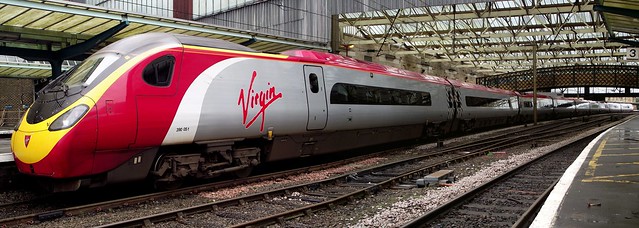

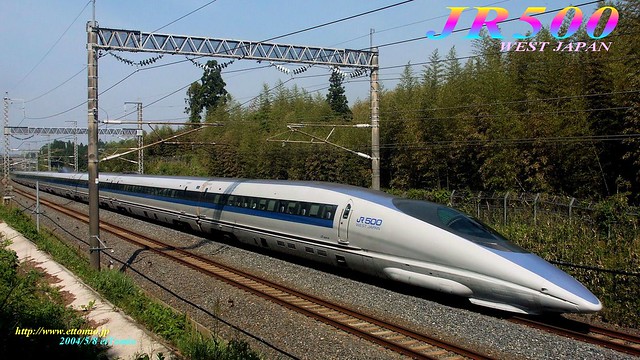


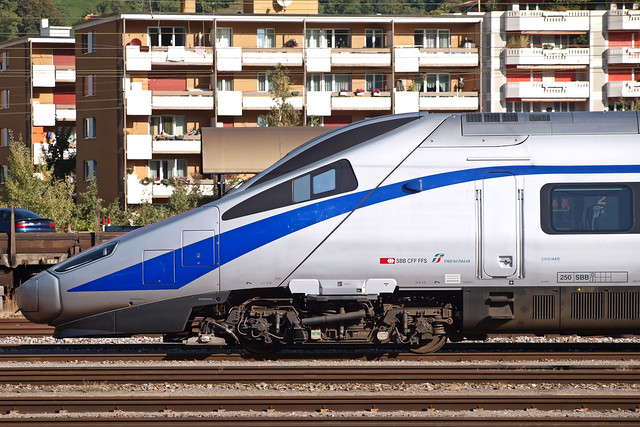

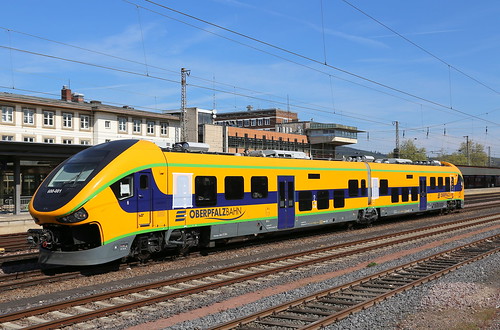




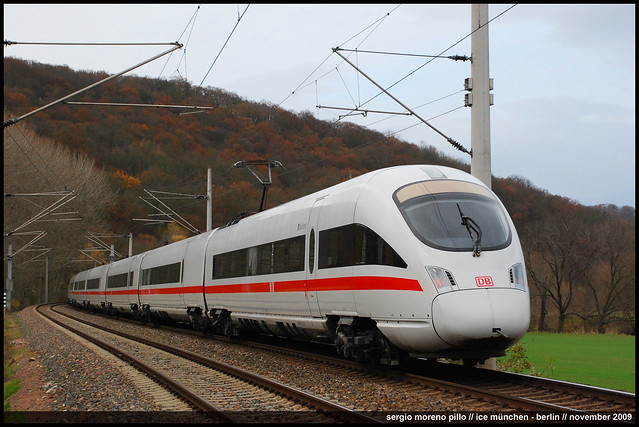

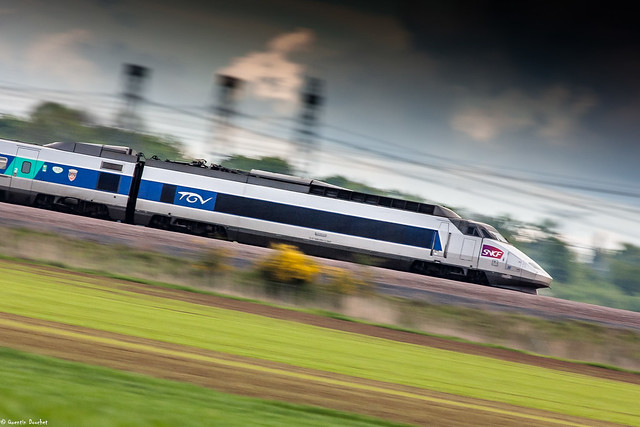



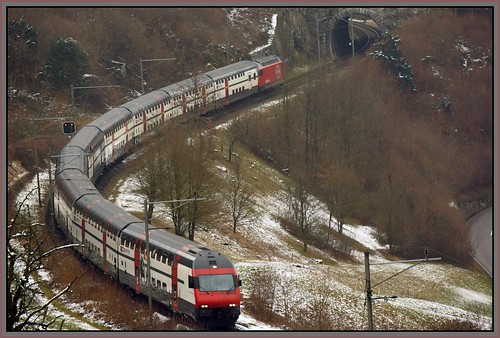



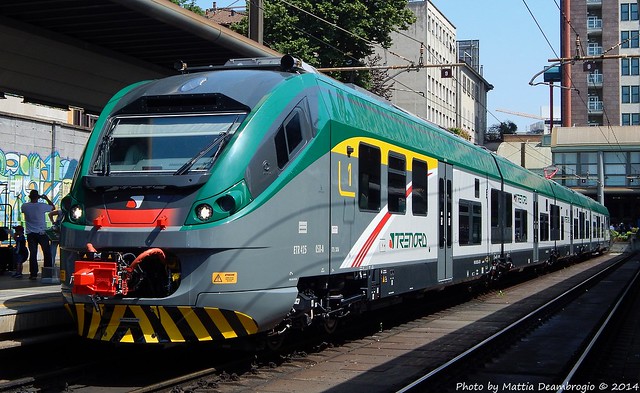






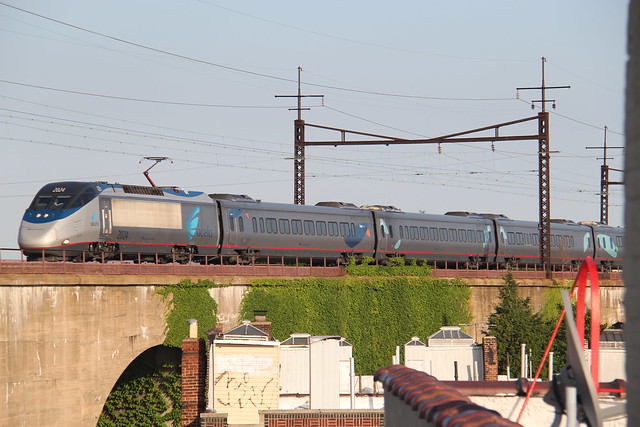
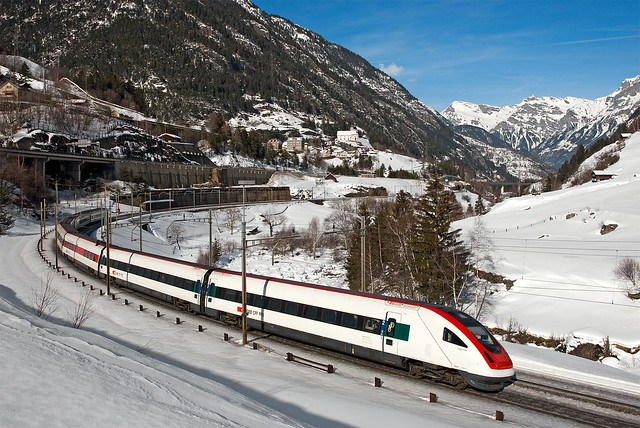

































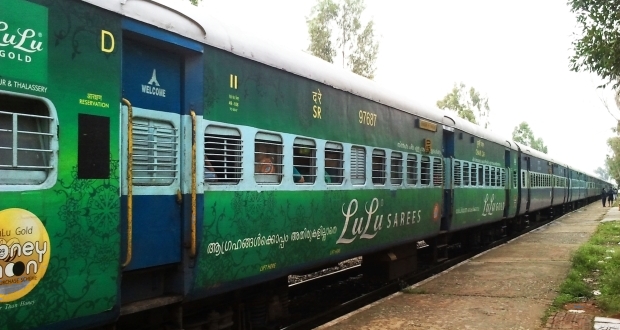

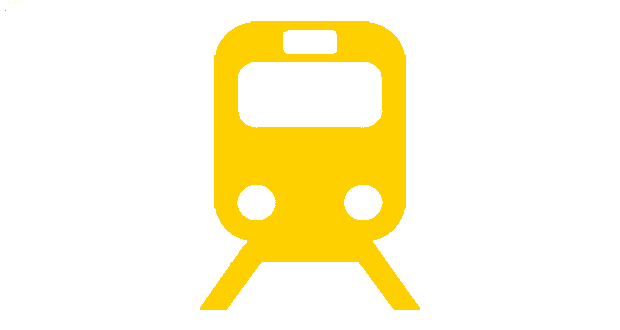
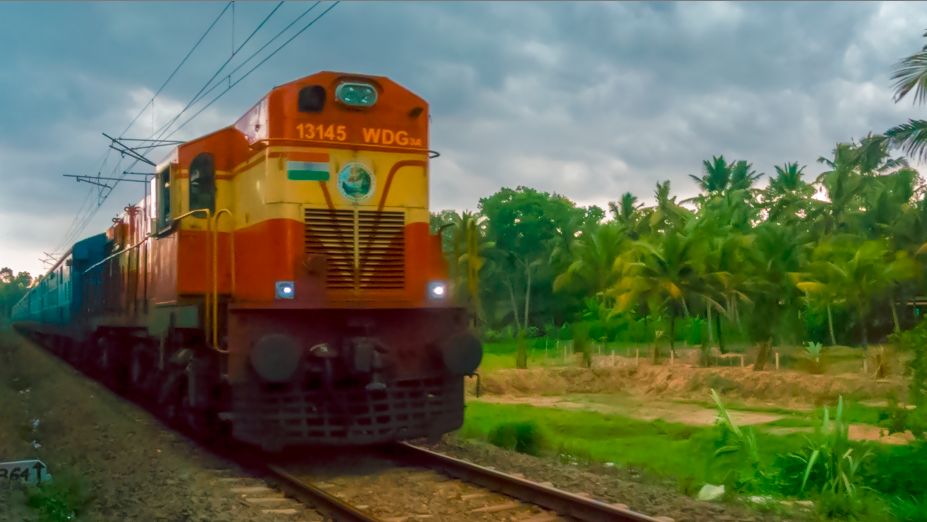
There is a cost-effective alternative on Rajdhani routes- assembling a trainset with a rake of LHB coaches and a WAP-5 at either end, and power cables running along/over the roof of each coach to run both locomotives together. That can be an immediate solution until the trainset is developed, and can run more services across the country.
If they intend to use EMU trainsets for such journeys, they need to increase the MPS to make it significantly faster end to end. A benchmark for such a service is the D-series of overnight services in China, which cover such distances as Beijing-Shanghai in ten hours or less. However, we cannot imagine them having 3A accommodation and being cost-effective, so entry-level accommodation in them will have to be similar to Coach Class in AmTrak.
Pendolino, adapted to the Indian network and Indian demands (essentially, high capacity), will work on most IC routes in a 400-800 km range. This technology has proved itself in multiple networks, so IR has another proven option to run a set of services.
Low-cost EMUs at lower MPS can work for various trains like Lalbagh Express or Gujarat Express or Taj Express- plenty of platforms are available, which can be modified for running these services. One major overhaul needed in ICF/RCF EMU design is shifting of all power equipment under the floor of each motor coach, and sharing power between motor coaches so that only a single pantograph needs to be raised. The likely cost saving needs to be evaluated, although these designs are coming close to the end of their time.
For a more challenging task- making a Punjab Mail or Paschim Express as fast as a Rajdhani, there are two options to test- synchronised locomotives on both sides of a rake, as well as modified EMUs. However long it takes to introduce EMUs to different rail services, priority must be given to building enough LHB rakes and enough 3-phase locomotives to use in pairs for running trains along very long routes. Whatever IR chooses, they’re better off opting for known, adaptable technology, than trying to do something out of the ordinary.